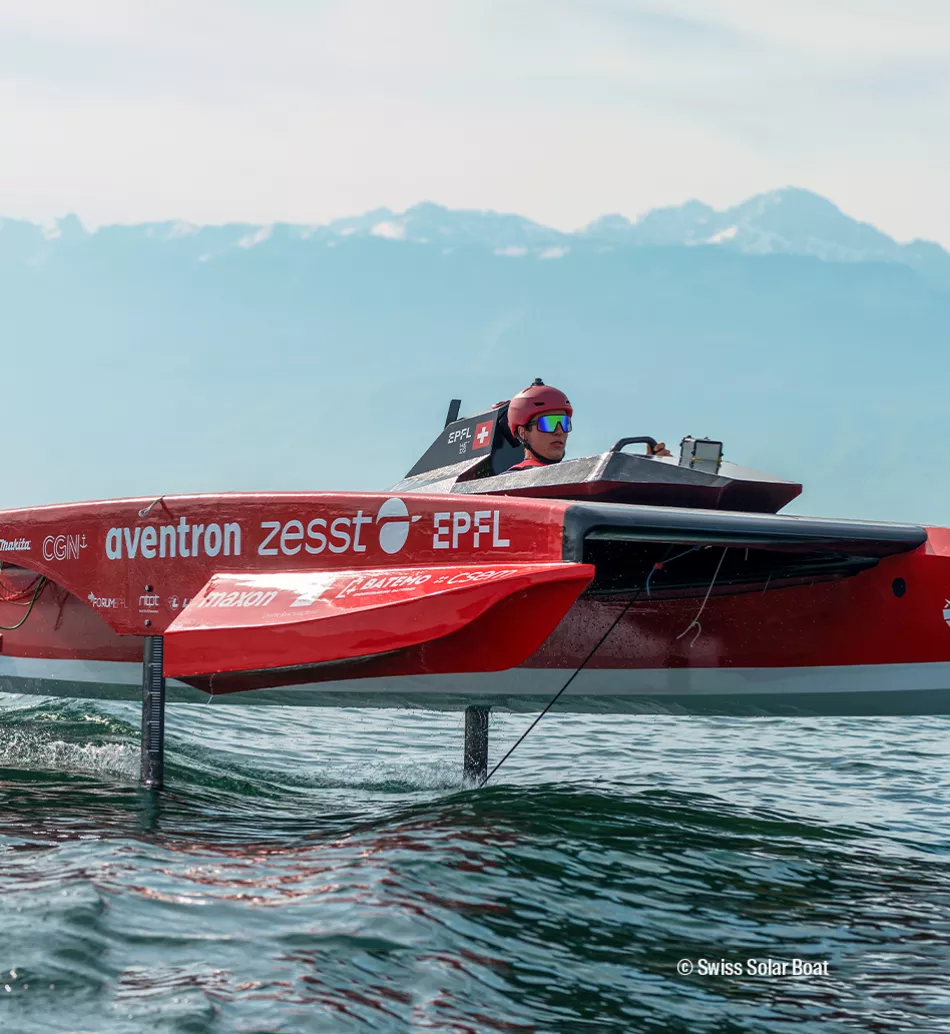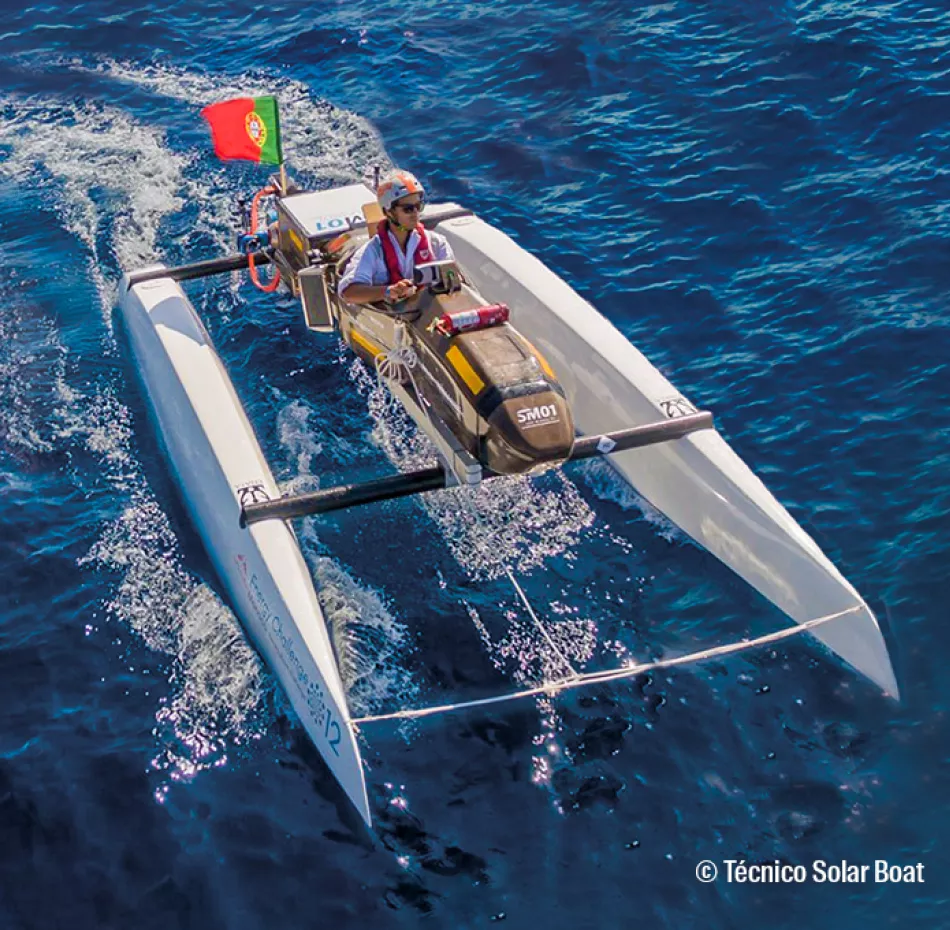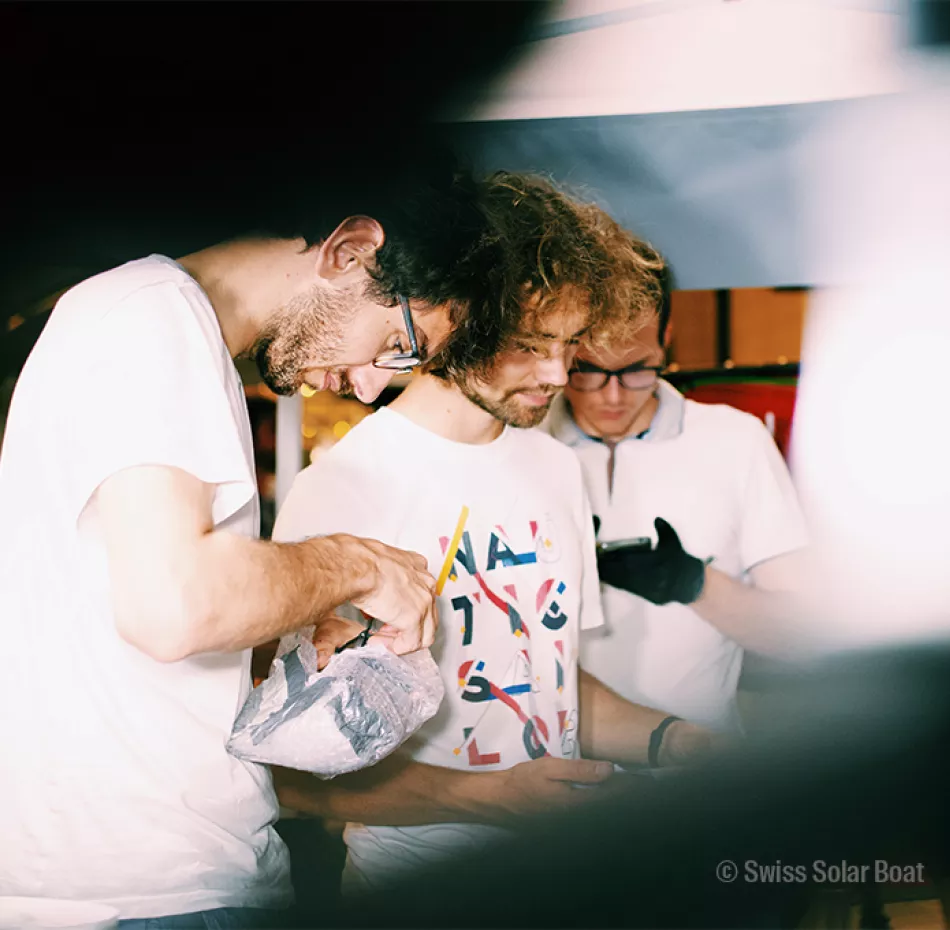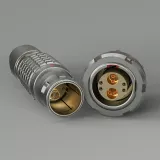Ingenious asymmetry

To optimise the efficiency of their concept, the students of the Swiss Solar Boat team are proposing a rather unusual design. They are aiming for victory this summer at a competition in Monaco.
Last July, in Monaco Harbour, the 8th edition of the Energy Boat Challenge was in full swing.Engineering students from all over the world are welcome to participate in this challenge where about a dozen boats competed in the “Solar” class. Among the monohulls and catamarans, there was the Dahu, a boat with a somewhat incongruous design. With its two hulls of different width and length, its asymmetry is even more surprising when it “flies ” on its three hydrofoils. Astonishing but efficient, since the Dahu won the second place in its category.
A few months later, we went to see the boat, dry in its storage area on the EPFL (Swiss Federal Institute of Technology) campus. Its designers, the students of the Swiss Solar Boat team, have been busy working on it, firmly determined to win the Monaco challenge this summer. We can at last ask them why such unusual design? “To shake up the codes ”, answers a smiling Simon Tychyi, the team’s technology manager. There was of course a reason behind the choice: “We wanted our boat to be as stable as a catamaran when she’s on the water, but also as lightweight as possible when lifted on its hydrofoils – this is why the secondary hull is smaller.”
With its asymmetrical structure, the Dahu is like a cousin of the proas, a traditional outrigger canoe of the Pacific and Indian Ocean. It also explains the witty name the students have given her: the Dahu is an imaginary quadruped from Alpine folklore, whose right and left legs are not the same length!
The secondary hull was not the only component to be streamlined.The structure (sandwich with a foamed body and as few supporting elements as possible) and the materials (pre-impregnated carbon, Airex foam) were selected to maximise the weight/rigidity ratio.
All in all, the 7-m boat weighs only 190 kg and its main hull resists potential shocks up to 2G.
The same obsessive attention was paid to energy efficiency. Several students of the Swiss Solar Boat team have worked at the CSEM (Swiss Centre for Electronics and Microtechnology) in Neuchâtel, a technological excellence centre, renowned in the field of renewable energies. Thanks to this experience, they have contributed to the design and production of their solar panel.
This latter, made up of 150-300-micron monocrystalline silicon cells, for a total thickness of only 0.4 mm, is in fact a foil to be bonded onto a surface. Its energy efficiency? “Not in the same league as the solar panels used in space, but still high-class !” answers Simon Tychyi with a note of satisfaction.
A thinner foil also means less silicon to be extracted from the ground, explain the students, who endeavoured to reduce grey energy for every aspect of the development process. By the way, this effort was honoured by an eco-design award last summer.
The rules of the Energy Boat Challenge limit the solar surface to 6 m2, but each competitor is free to spread out the solar cells at will. Swiss Solar Boat used computer simulation to identify the best exposed spots on the boat, adapted to the position of the July sun in Monaco, the path of the course and even the shadow cast by the pilot’s head.
Then, the power needs to be distributed with as little loss as possible. The Dahu uses maximum power point trackers, an electric converter, to optimise the power extraction and distribution of the solar panels. Energy management is part of the strategy. For instance, for the endurance race, it is not possible to race full speed ahead. The students have programmed “energy saver mode” to be able to keep up with the four-hour race. On the other hand, they have programmed “ sprint mode” for the speed contest.
The Dahu’s two engines produce 800 N. Its inverted rotary propellers are placed one behind the other: the rear propeller recovers the hydrodynamic vortex produced by the front propeller, altering the waterflow to optimise performance. The solar boat can speed ahead at 45-50 km/h (25 knots). It is all the more efficient, since as of 18 km/h (approximately 10 knots), it takes off on its T-shaped hydrofoils. “This reduces its energy consumption by one third”, explains Simon Dorthe, responsible for electronics.
The boat’s balance is also electronically controlled, which is necessary, because its asymmetrical form makes it rather unstable. “The sensors record the data 50 times every second, which makes it possible for the on-board computer to correct the hydrofoils’ angle and the height of the boat continuously for maximum efficiency.” In fact, the three hydrofoils are not rigid: their supporting surface pivots like the ailerons of aircraft.
All the data captured by the sensors are continuously transmitted onshore. This communication is bidirectional : the team can optimise the adjustments of the Dahu on-the-fly. It also adapts them according to changing weather conditions.
Clearly, every detail contributes to winning a few percent efficiency. However, to be able to measure and optimise, you need to navigate and test as much as possible. And this is exactly what Swiss Solar Boat was missing last summer, since the students finished building the Dahu in the last moment.
This year, the boat does not need to be built. “So, we will have much more time for testing!”, confirm happily Simon Tychyi and Simon Dorthe. “We will be able to know more about the boat, to enhance its reliability and finetune the algorithms.” Over fifty hours’ sailing were planned between April and June.
Then, in early July, it will be time to transfer thirty members of the Swiss Solar Boat team to the Principality of Monaco. For some of them, it will be the end of their contribution to the project. For all of them, it will be an “outstanding experience”, shared with hundreds of passionate and united students. Victory would of course be the icing on the cake.

Three « LEMO teams » in Monaco
This summer in Monaco, Swiss Solar Boat will be in direct competition with another LEMO-sponsored team. The Técnico Solar Boat (from the Instituto Superior Técnico, Portugal) will also compete with SR03, its third solar prototype.
The Iberian team will also enter the competition in the “Hydrogen” category with its SM01 boat. Just like the Dutch team TU Delft Hydro Motion, also supported by LEMO!
It is no coincidence. The Swiss group has been regularly supporting young engineers for a long time. The idea is to give a little help to the most innovative projects by offering the best connectors available on the market. It is a win-win partnership, as the students’ demanding and original requests also boost LEMO’s innovation.


